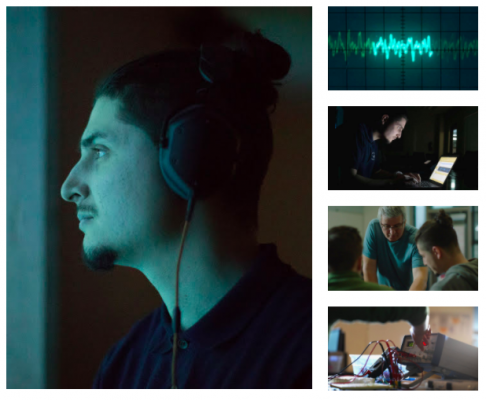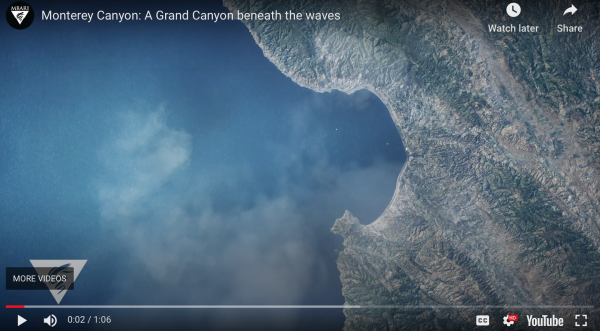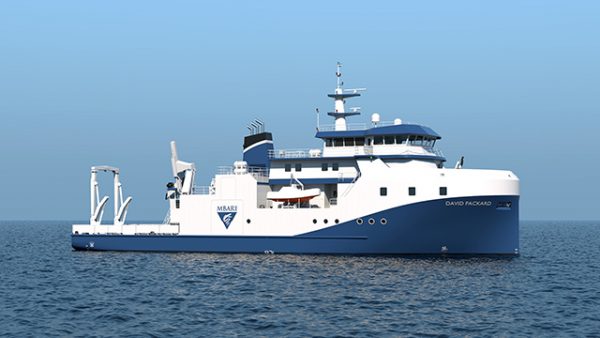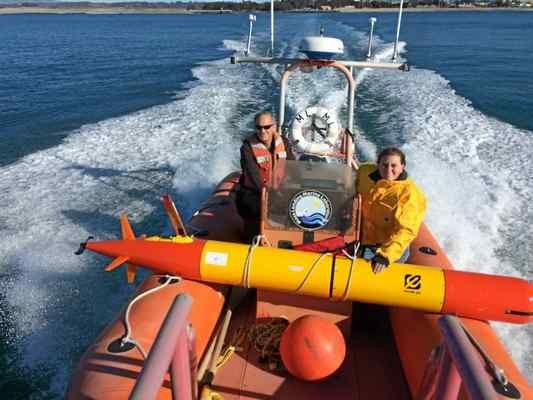Featured
Murres dive into acoustic ecology
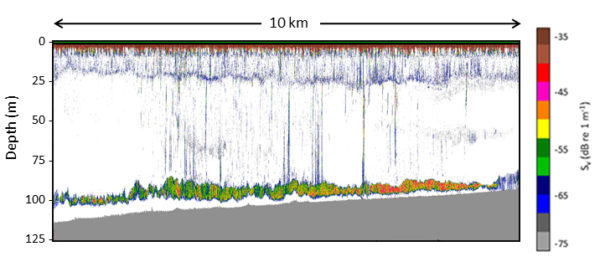
By Emma Bueren
MBARI
September 21, 2017 — Moss Landing, CA
At first, Scientist Kelly Benoit-Bird wondered if the strange lines appearing on her acoustic readouts were a technical error. Unlike the more typical blobs and bands that were picked up by her echosounder, a machine which uses sonar technology to “see” into the ocean, these lines looked almost like barcode stripes.
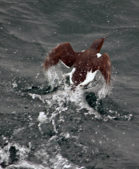
A common murre. (Credit: Kelly Benoit-Bird)
A common murre. Image courtesy Kelly Benoit-Bird
Nothing seemed to explain how or why the lines were appearing, until Benoit-Bird realized that every time the lines occurred, a seabird biologist aboard the fishing vessel Frosti would point out the common and thick-billed murres (Uria aalge and U. lomvia) nearby. These birds, with their black and white plumage, look a bit like penguins but are actually a type of auk. Although capable of flying, the birds are much more graceful in water and are capable of diving down to depths of over 150 meters (almost 500 feet).
As it turns out, the black and white plumage of the common murre isn’t just striking. It also helps keep the birds warm by retaining air. As the birds dive, the water pushes the air out of their feathers, releasing a stream of bubbles—the cause of the mysterious lines in Benoit-Bird’s data.
Although the birds are as common as their name implies, capturing their dives with an echosounder is not. Normally when acoustically sampling the ocean, scientists have a large amount of sea to cover. Ships sail quickly to cover as much ground as possible and take snapshots of the ocean. However, for this mission, Benoit-Bird was interested in the small scale patterns around the seabird colonies in the Bering Sea. The slower pace of the boat allowed her to capture the column of bubbles released when the birds dive, something never before used by scientists to study the ecology of these animals.
This article was originally published here: http://www.mbari.org/murres-dive-acoustic-ecology/
###
Tagged MBARI





